Clovers are another type of flower, but they don’t bloom until late summer or early fall. Their leaves are heart-shaped, and they look similar to dandelions. Clovers are native to North America and Europe and thrive in sunny areas. There are believed to be around 300 species types of clovers.
In this article, we will discuss a few of these types of clovers that you can find and grow.
1. White Clover (Trifolium Repens)
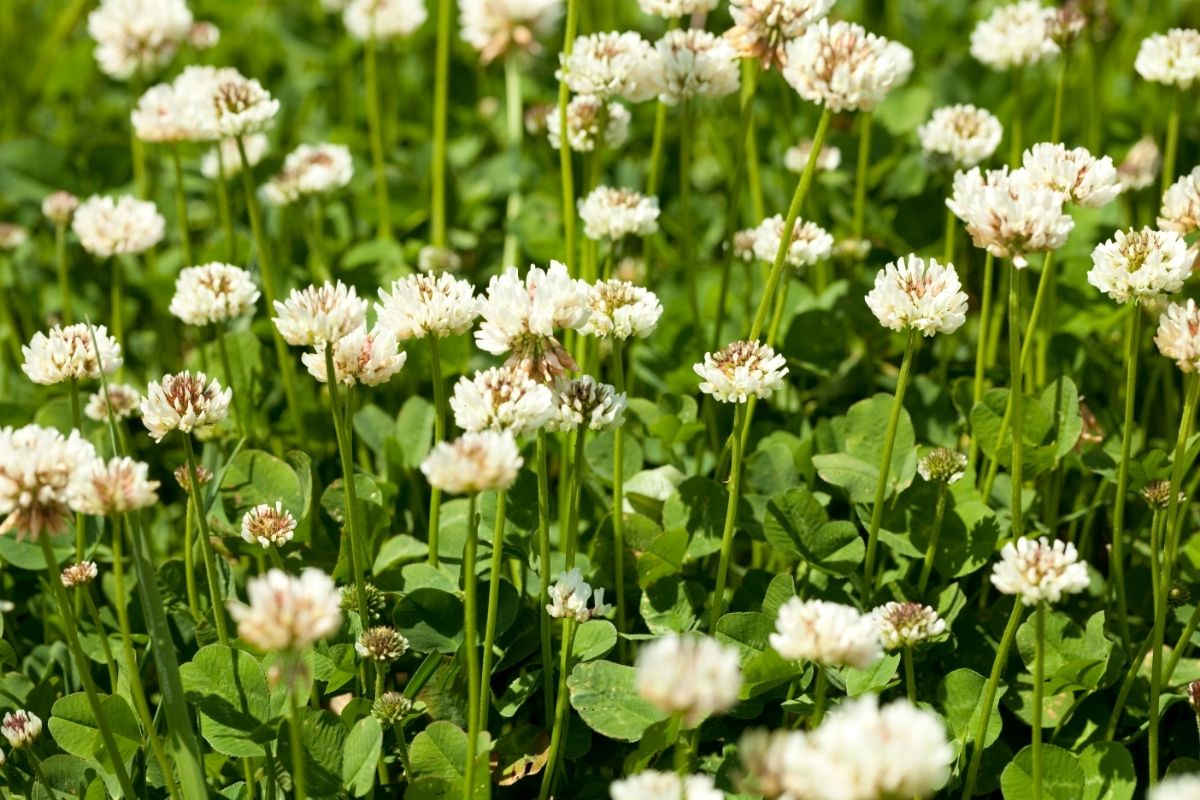
The White clover is a very versatile clover that can tolerate various types of soil. They enjoy springtime weather with lots of moisture. White petals are produced with a slight purple tint to the base of the petals.
2. Crimson Clover (Trifolium Incarnatum)
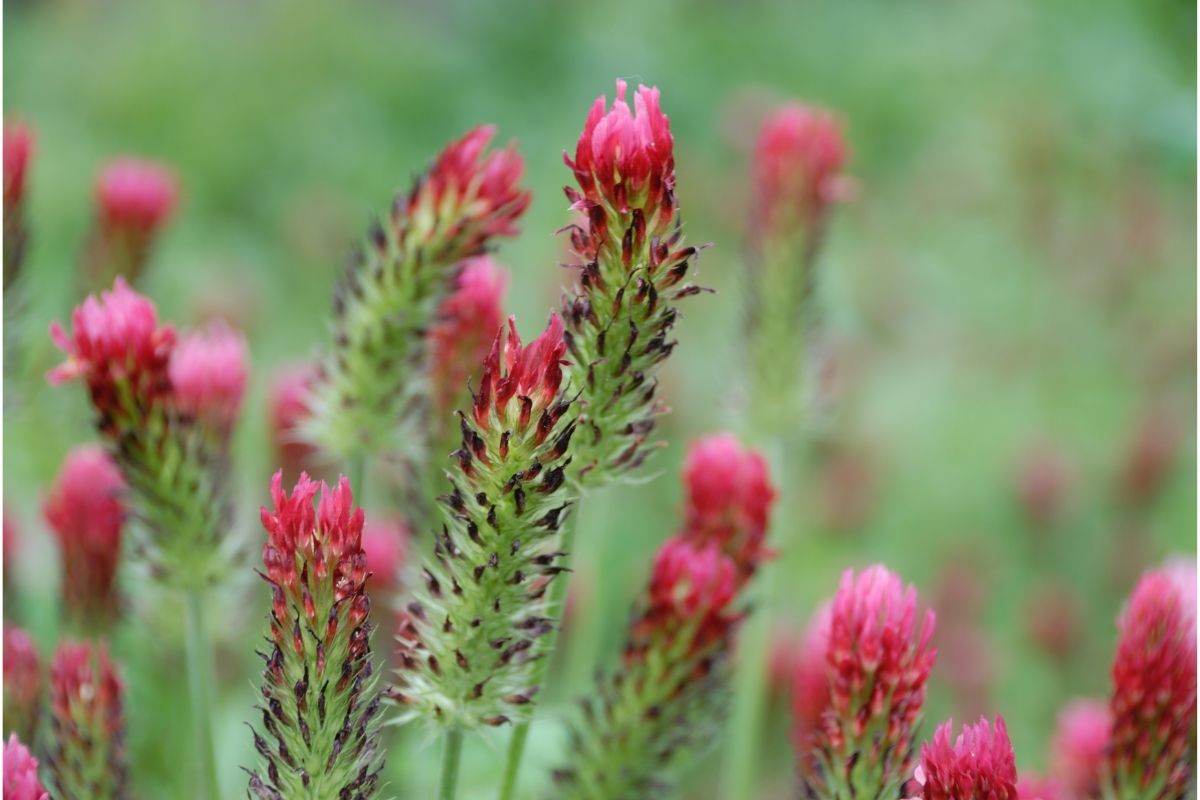
Crimson clover is a popular choice when it comes to forage cover. This clover will develop during winter and produce tall, thick stems with vibrant red blooms.
3. Suckling Clover (Trifolium Dubium)
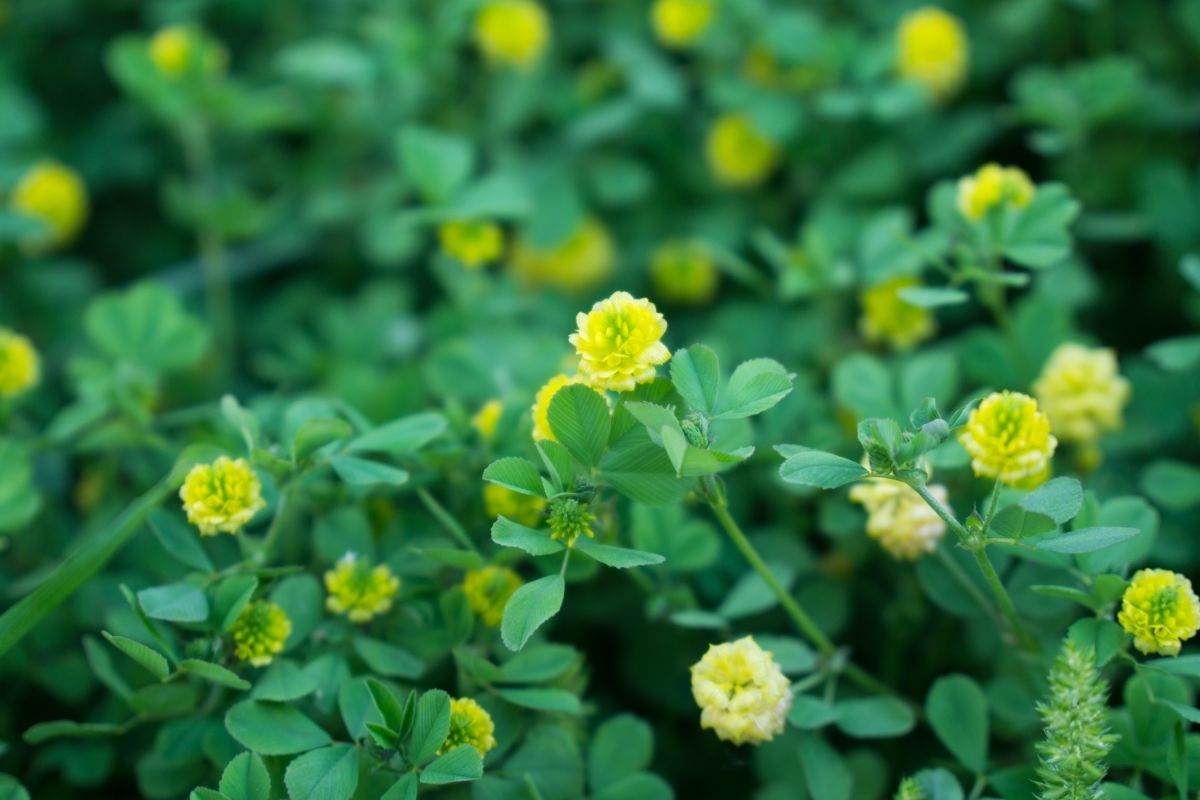
Suckling clover is a type of winter clover. It produces small yellow blooms, alongside its vibrant green leaves, that will add color to any garden.
4. Red Clover (Trifolium Pratense)
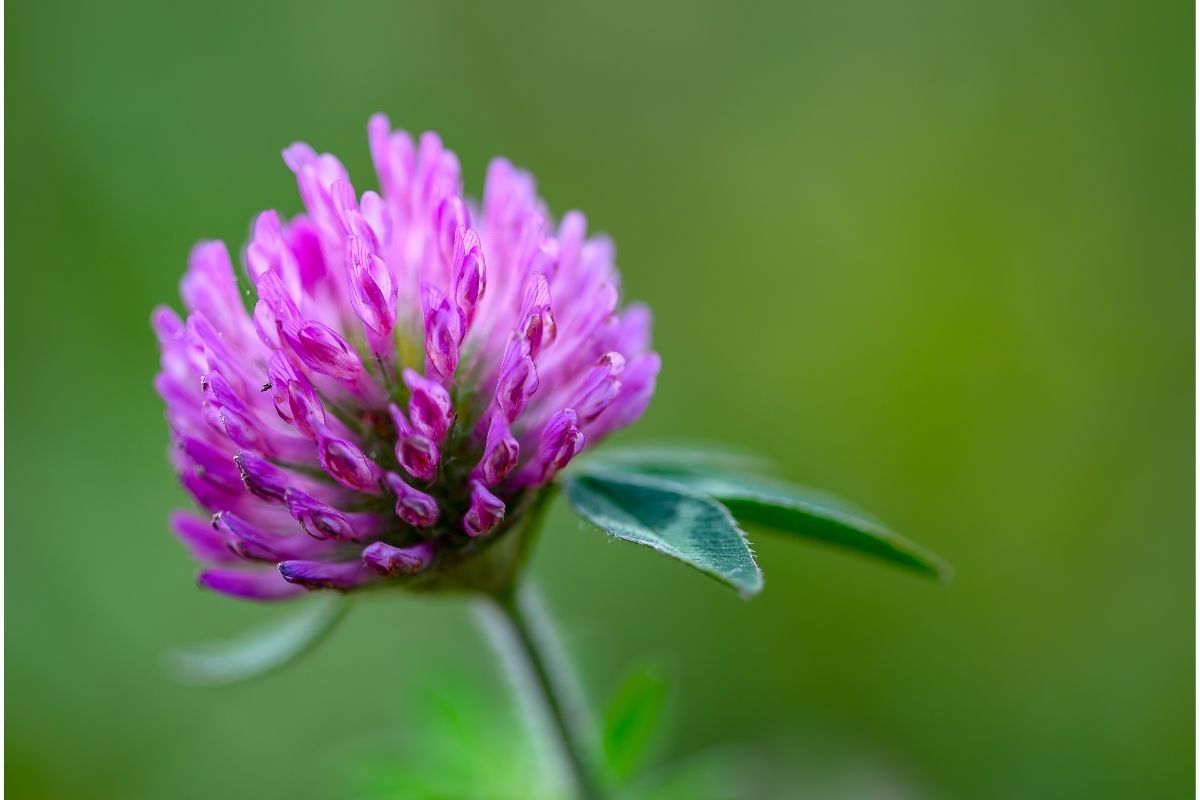
Red Clover likes moisture-retaining soils that have high levels of calcium. It is one of the easiest clovers to grow. A pink to purple flower develops during the spring.
5. Egyptian Clover (Trifolium Alexandrinum)
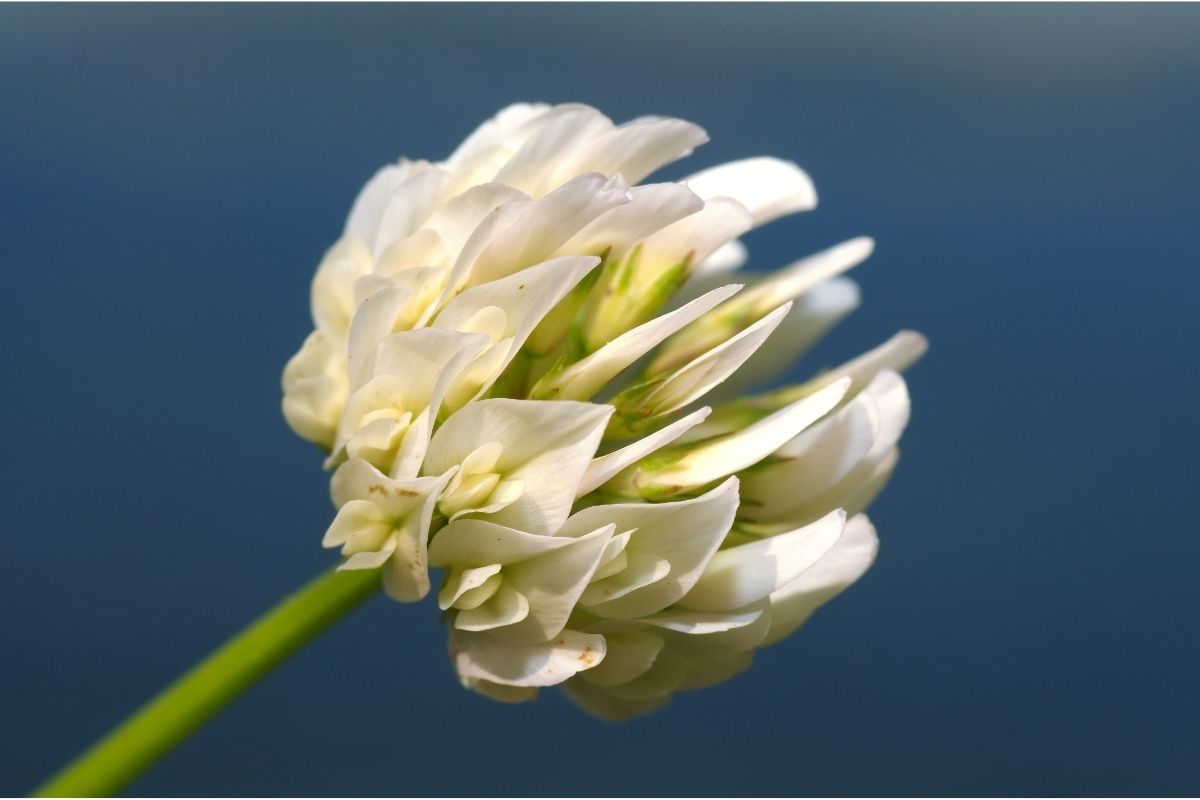
Egyptian Clover is also referred to as the Berseem clover. It has dark green leaves and produces delicate white to pale pink blooms. Commonly grown during the spring, as it is a cold and drought tolerant plant.
6. Subterranean Clover (Trifolium Subterraneum)
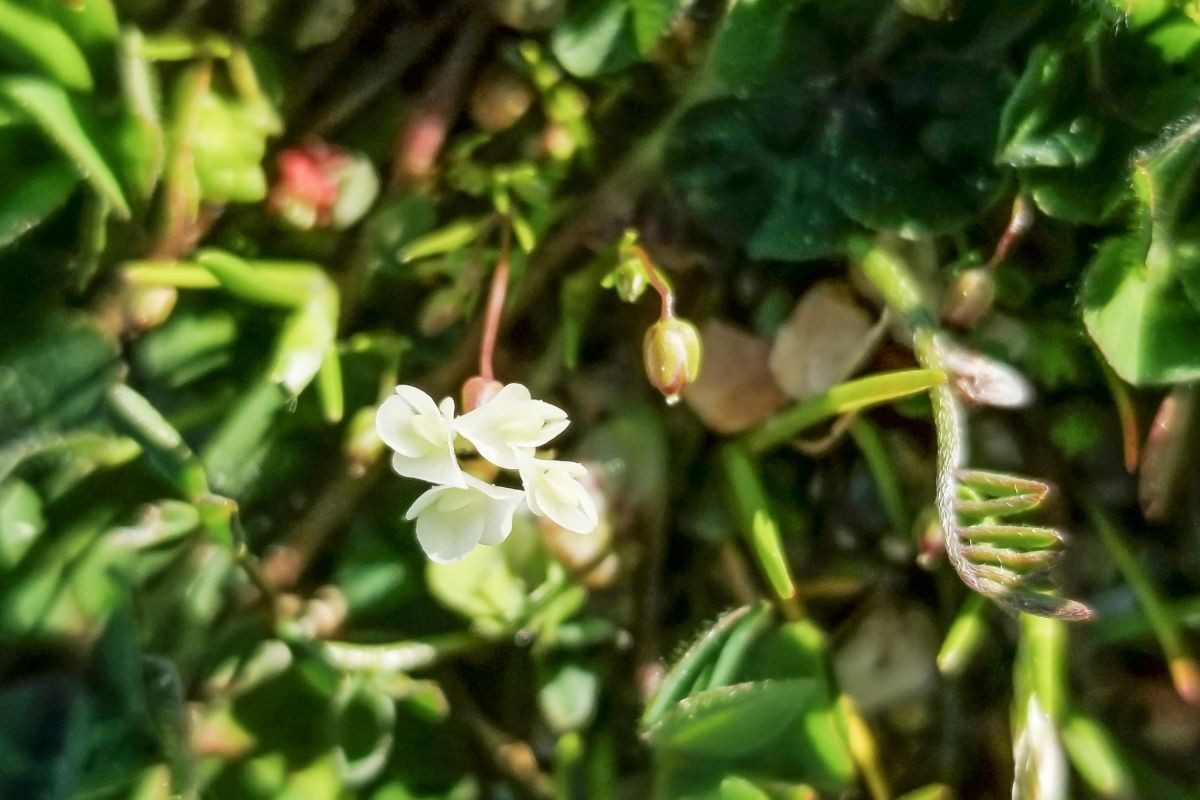
The Subterranean clover is self-seeding and makes a great ground cover. Deep green and fuzzy leaves, paired with quite wide white petals. This is an easy variety to grow that is also drought resistant.
7. Hare’s-foot Clover (Trifolium Arvense)
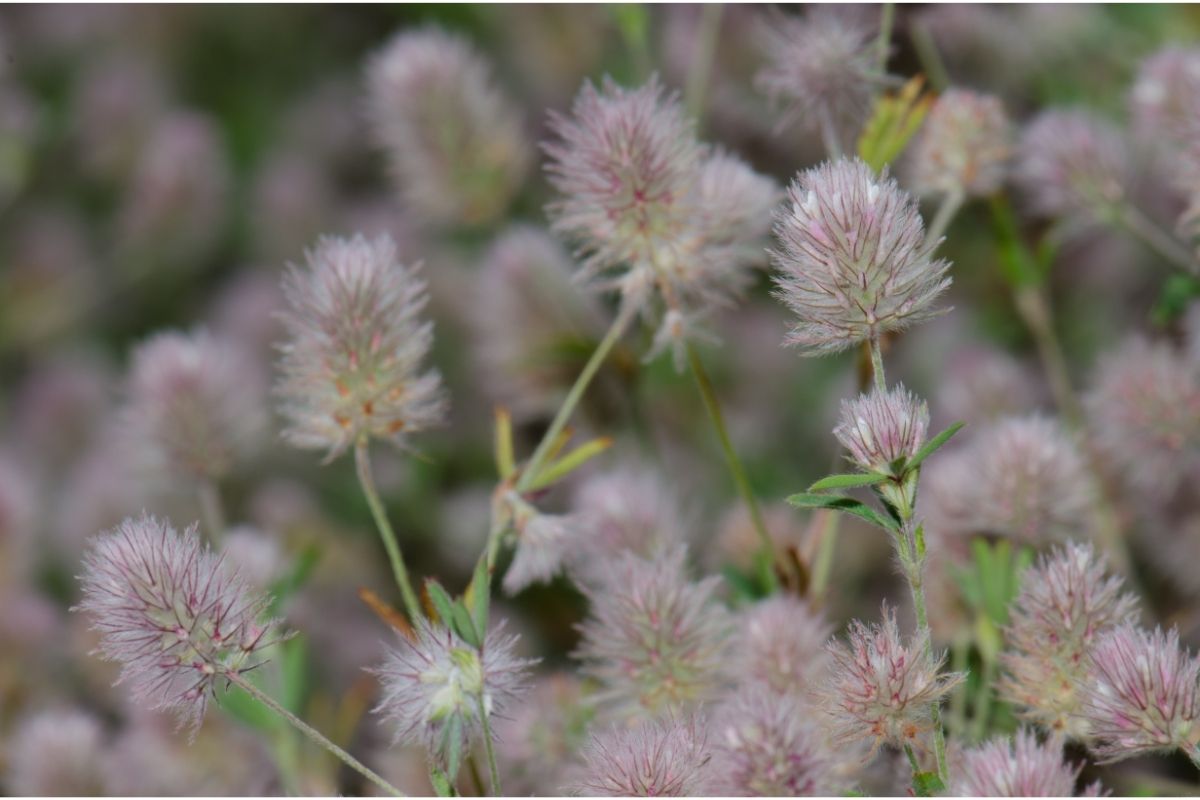
The Hare’s foot clover gets its name due to the hairs that cover the pink flowers. These will bloom during the summer months.
Its leaves are the typical three-leaf clover shape, but they are much smaller compared to other varieties.
8. Ruddy Clover/Red Feather Clover (Trifolium Rubens)
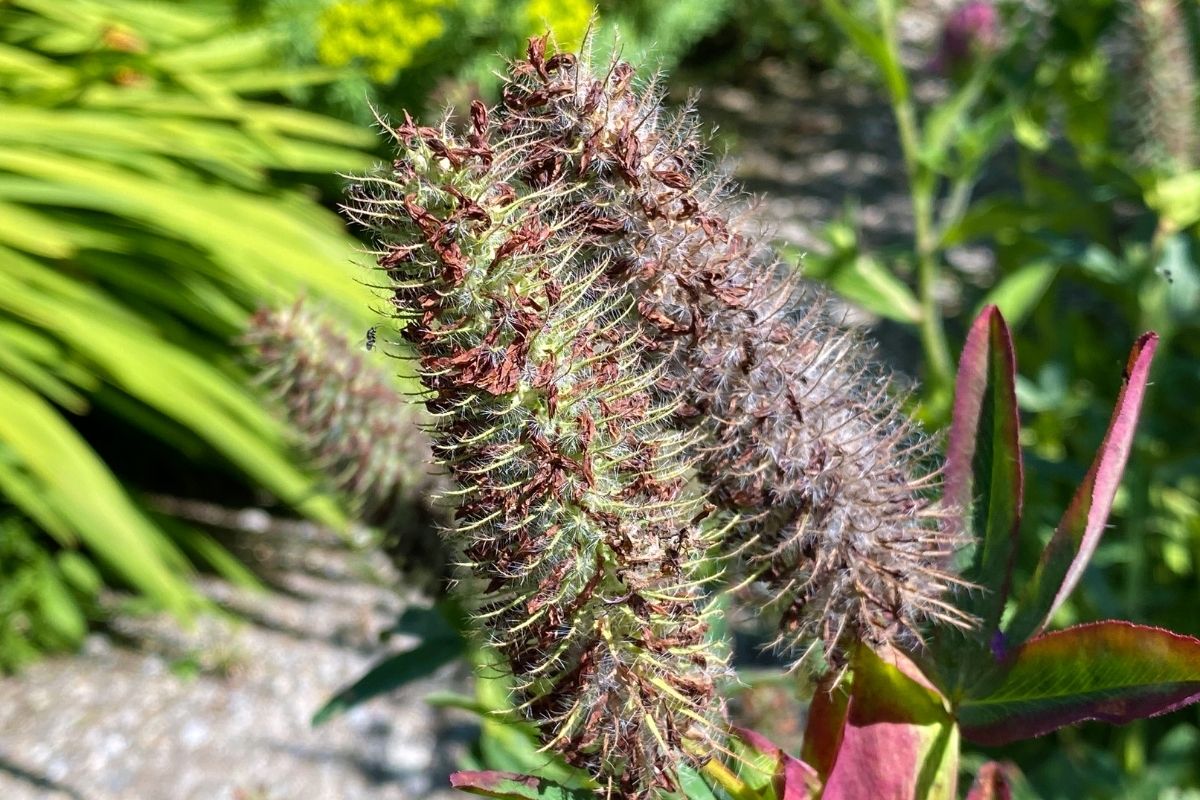
This type of clover produces large red blooms that will flower all summer long. This is another clover plant that makes the ideal ground cover, as well as attracts pollinators like bees to your garden as well.
The blooms should be cut after they have flower to encourage more and better flowers.
RELATED: Planting, Mowing And Watering Bermuda Grass Lawn | How To Do It Right?
9. Low Hop Clover (Trifolium Campestre, Hop Trefoil)
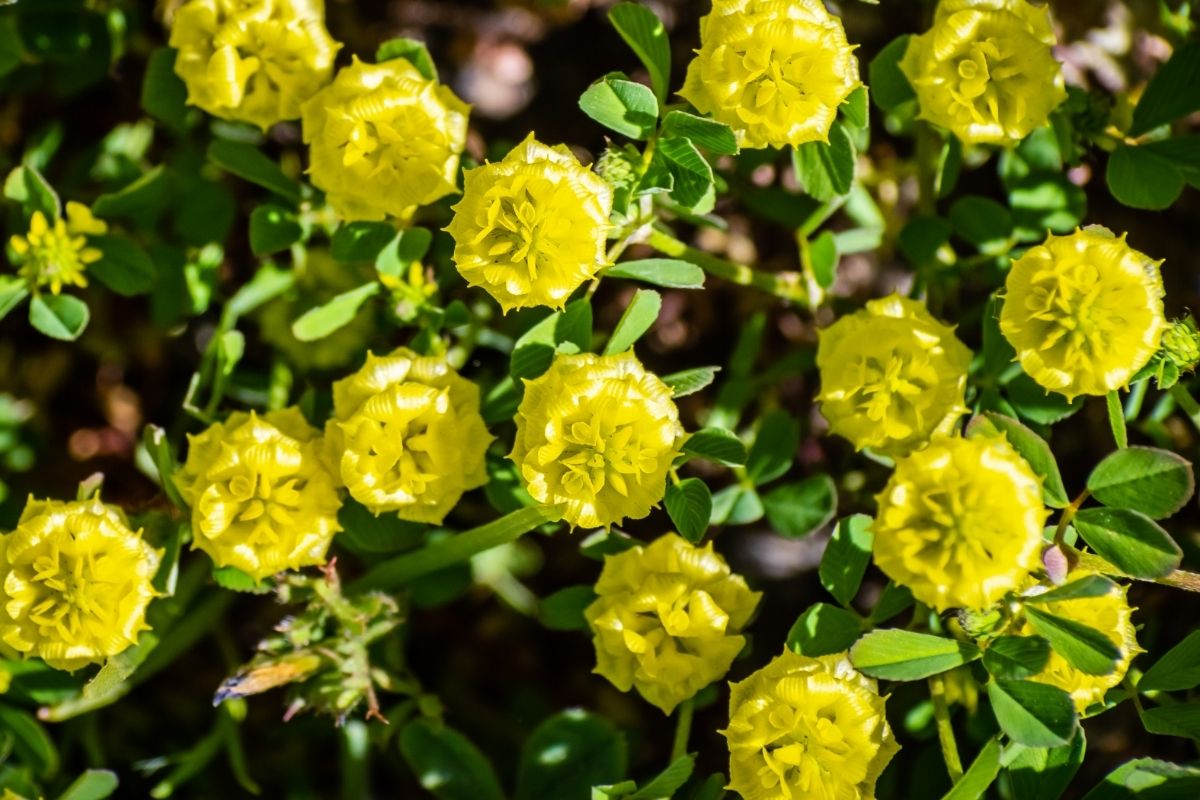
The Low Hop clover is often seen growing by the roadside or in empty fields. They produce a yellow bloom that is slightly green at the base. The stems are a vibrant green color. They enjoy being in the sun.
10. Siberian Clover (Trifolium Lupinaster)
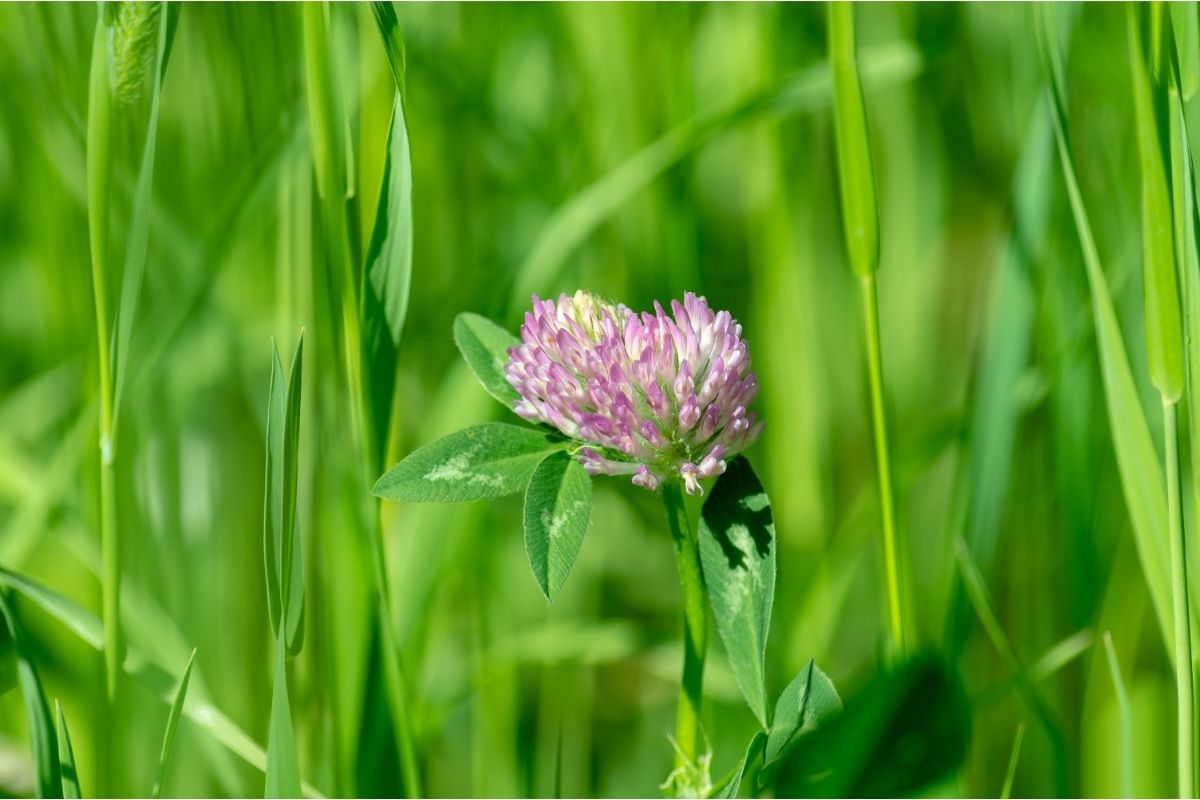
The Siberian Clover can grow to around 1.8 feet in height. This is a self-seeding plant that produces deep pink flowers.
11. Zigzag Clover (Trifolium Medium)
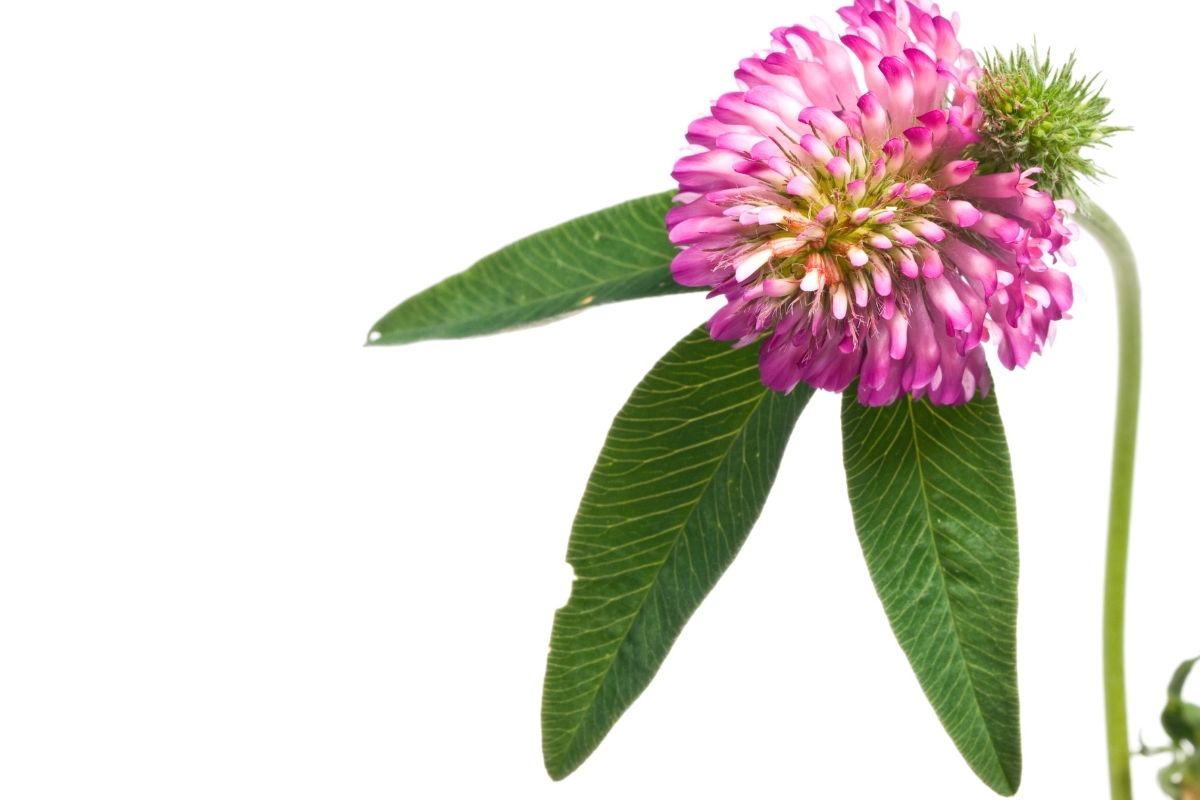
The Zigzag Clover is native to Finland. It produces straight and hairless stems with long vibrant pink petals alongside a white center.
It will bloom during the summer months, by roadsides and river banks. Bees and butterflies are attracted to this plant.
12. Running Buffalo Clover (Trifolium Stoloniferum)
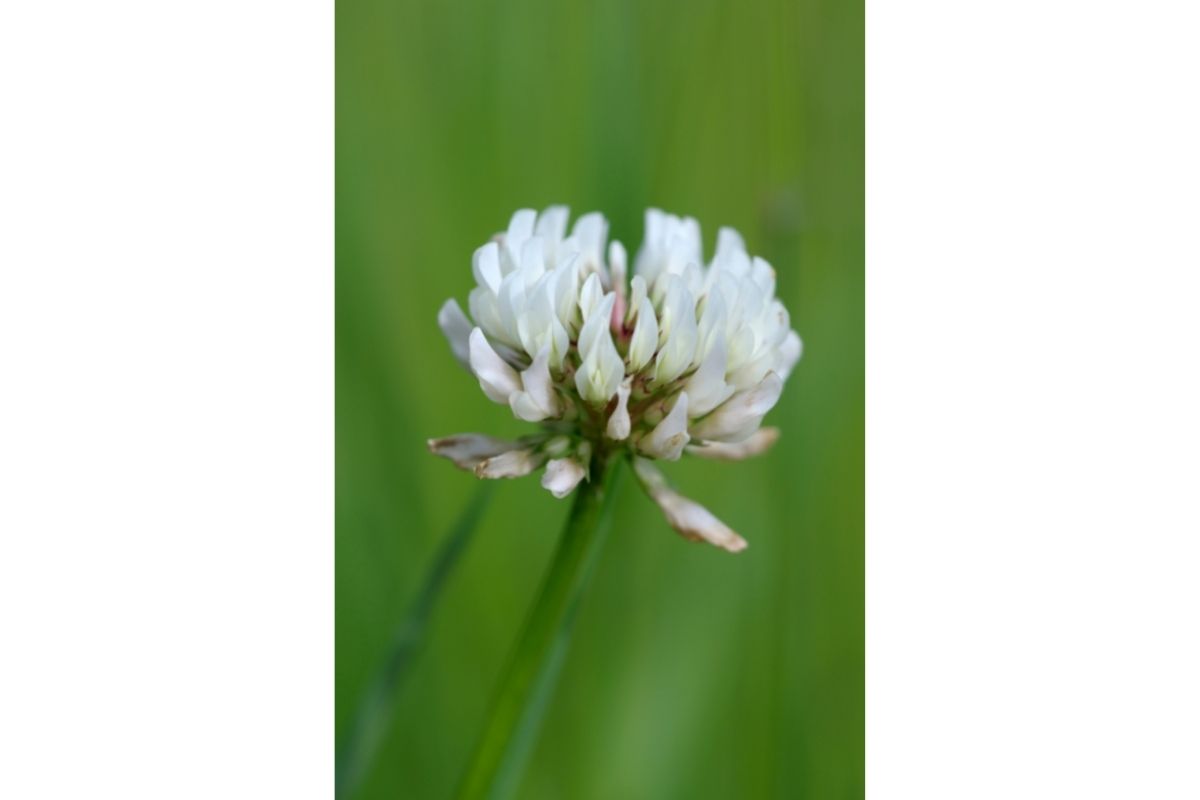
This clover gets its name due to the runners that are produced moving away from the stem and taking root somewhere else.
The Running Buffalo Clover will give you small yet delicate petals, which are usually white in color. This type of clover has actually been listed as endangered.
13. Cows Clover/Coast Clover (Trifolium Wormskioldii)
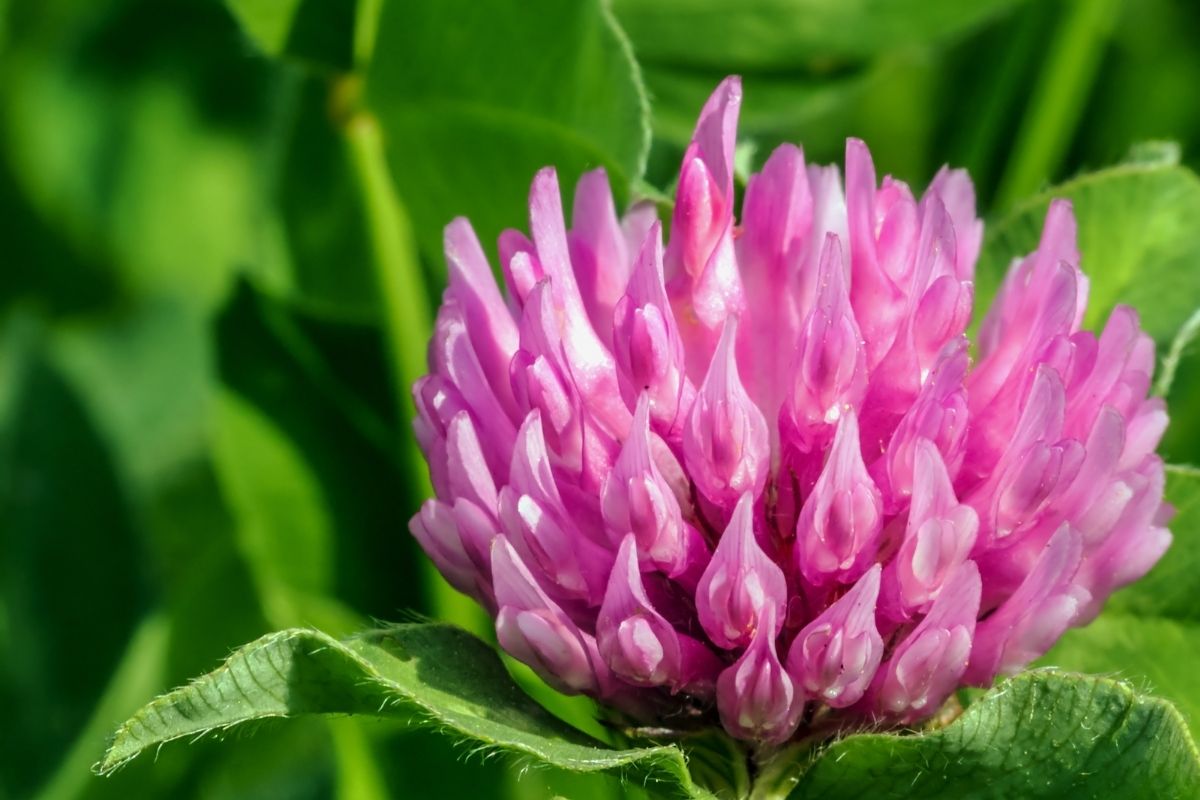
This type of clover will develop bold pink to white blooms that will catch your eye. Typically found in moist areas, forests, and woodlands. Native Americans would boil or steam this plant with fish.
14. Alsike Clover (Trifolium Hybridum)
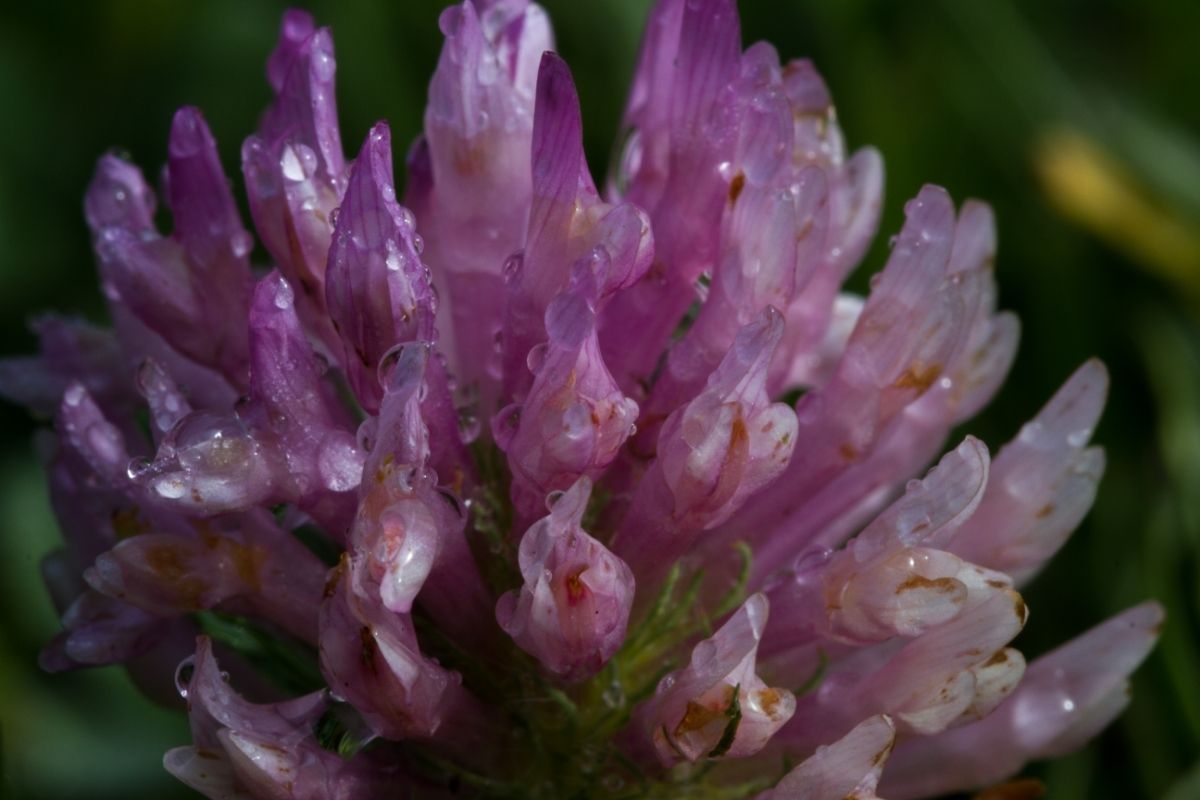
The Alsike clover commonly grows in the field or by the roadside. It produces white and pink flowers, which will turn brown after pollination. It is often confused with the red clover.
15. Mountain Clover (Trifolium Montanum)
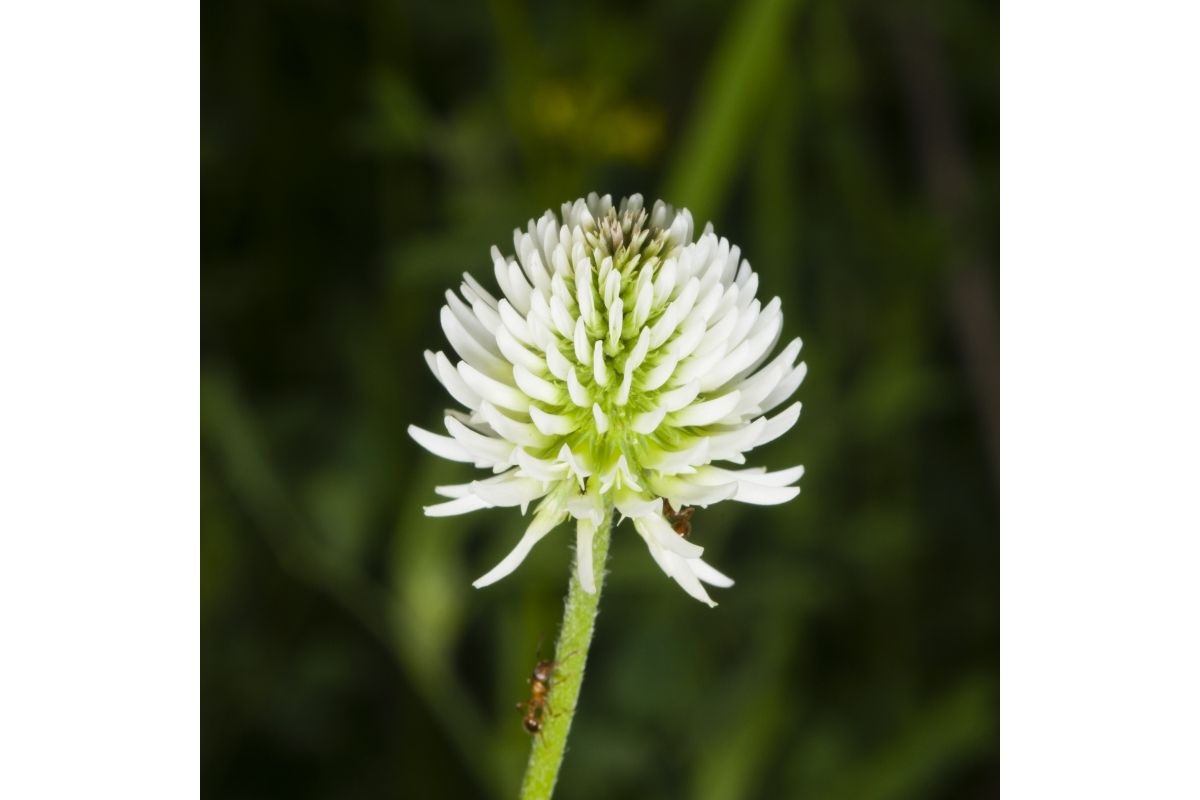
The Mountain Clover can grow to around 2 feet high. You will notice that it has a strong and straight stem that develops white blooms.
The leaves are typically quite hairy, but this plant is great as ground cover for areas that get a lot of traffic.
16. Chilean Clover Or Double-head Clover (Trifolium Macraei)
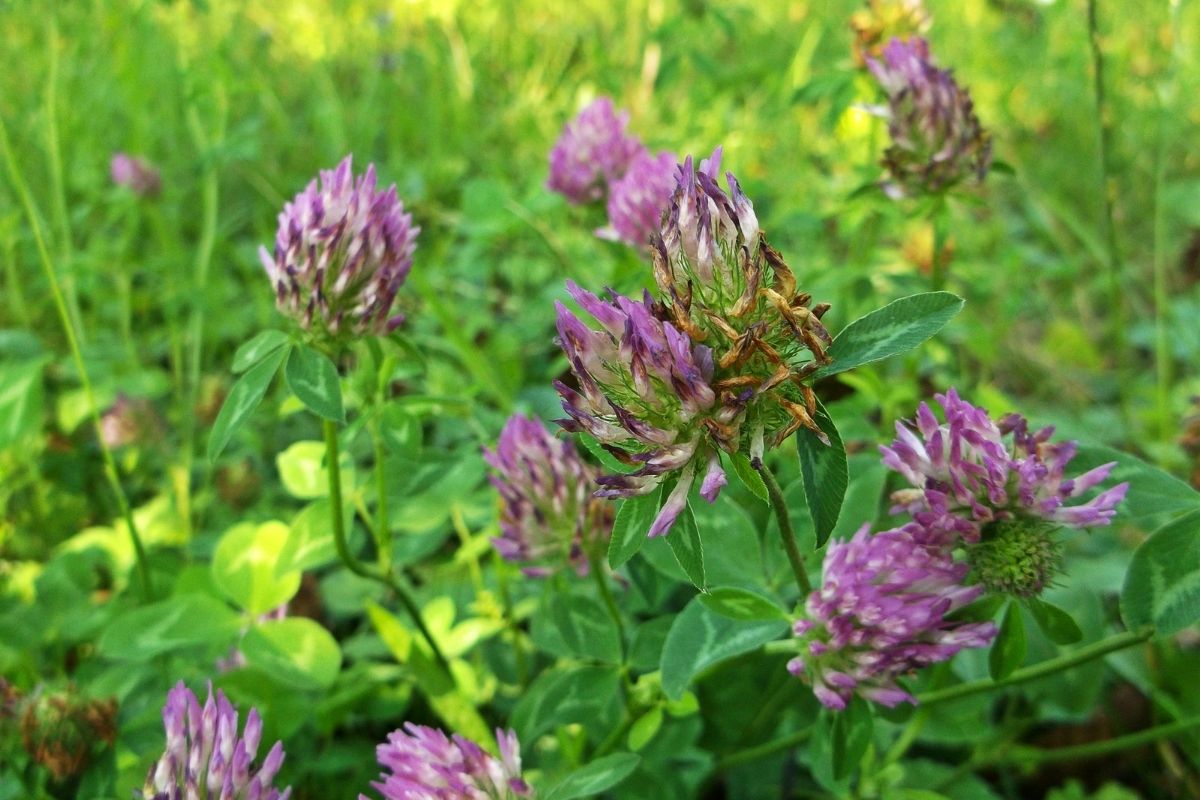
The Chilean Clover is very interesting to look at, found along the South American coastlines. It creates a round flower head, with purple to pink petals that are covered with hairy bristles. Another clover plant can be used as ground cover.
17. Foothill Clover (Trifolium Ciliolatum)
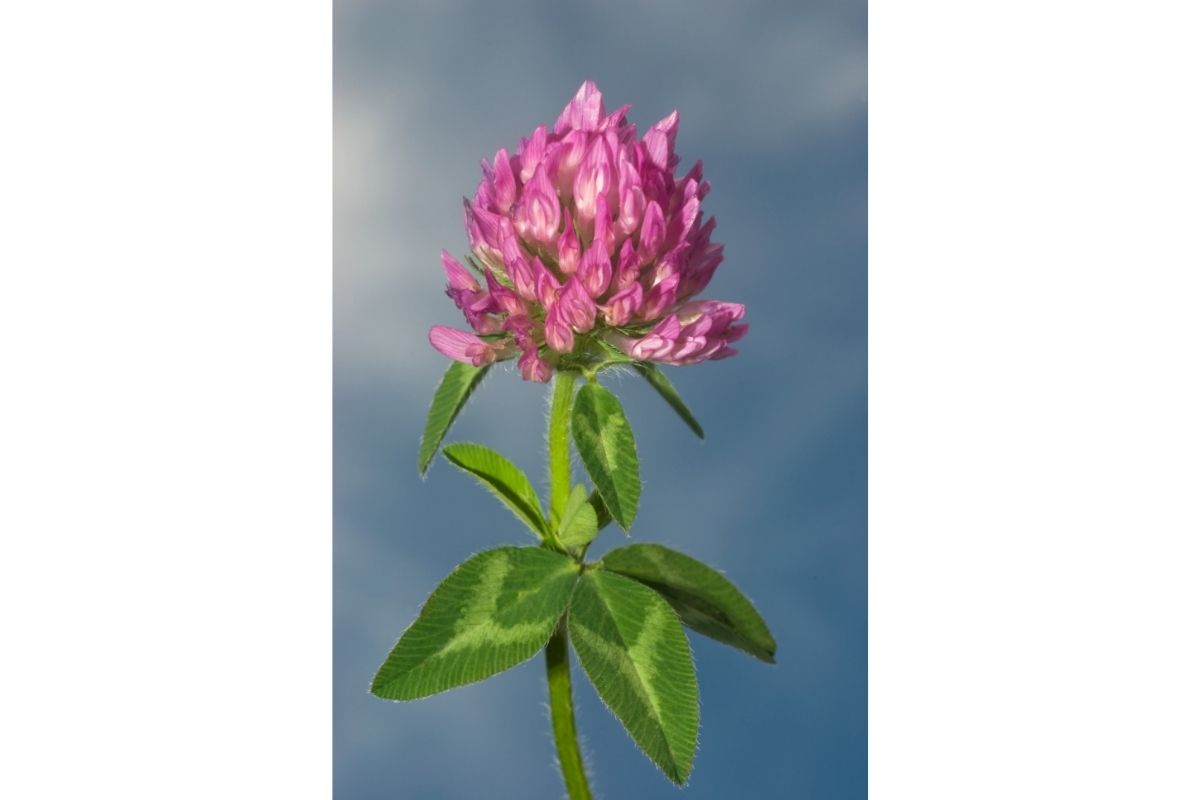
The Foothill Clover is native to North America, often seen in moist conditions or meadows. Hairless stems support pink to purple blooms that slightly droop. Occasionally this clover is used in Native American dishes.
18. Purple-Globe Clover (Trifolium Alpestre)
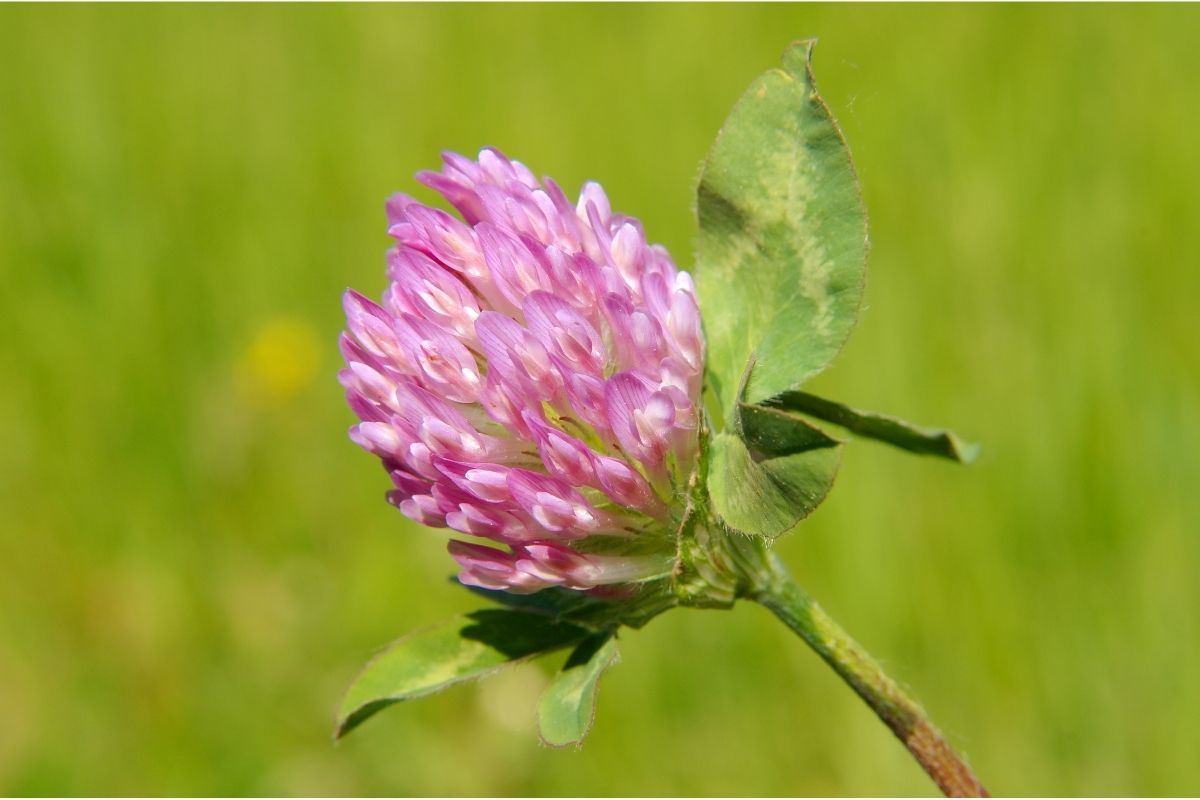
The Purple Globe clover is also known as the owl head clover. Deep purple flowers are supported on woody and straight stems. They are grown in fields and are ideal for vegetation as they hold nitrogen.
19. Alpine Clover (Trifolium Alpinum)
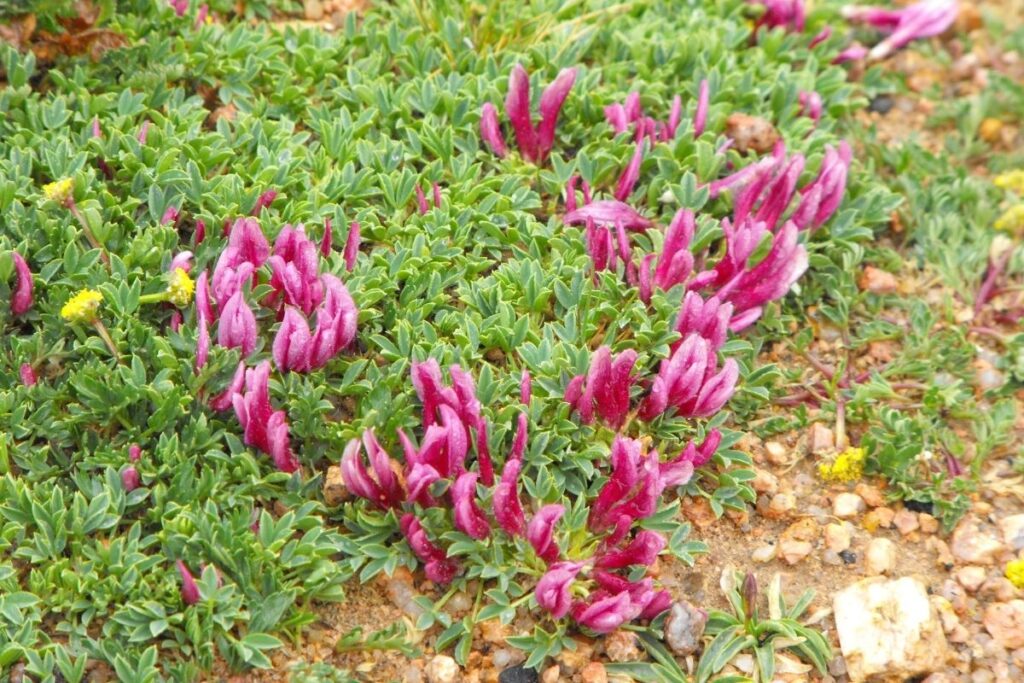
The Alpine Clover is native to the Alps. This plant has a short stem, which produces purple to pink blooms that have a pleasant scent. Grows in acidic soil in alpine climates.
20. Narrow Leaf Crimson Clover (Trifolium Angustifolium)

The Narrow leaf Crimson Clover is native to Asia and Africa. It develops cylindrical and spiky flowers that are a mixture of pink and green in color.
As the plant dries, the plant will turn brown, and the spike will turn into bristles. They look very similar to dandelions.
21. Rose Clover (Trifolium Virtum)
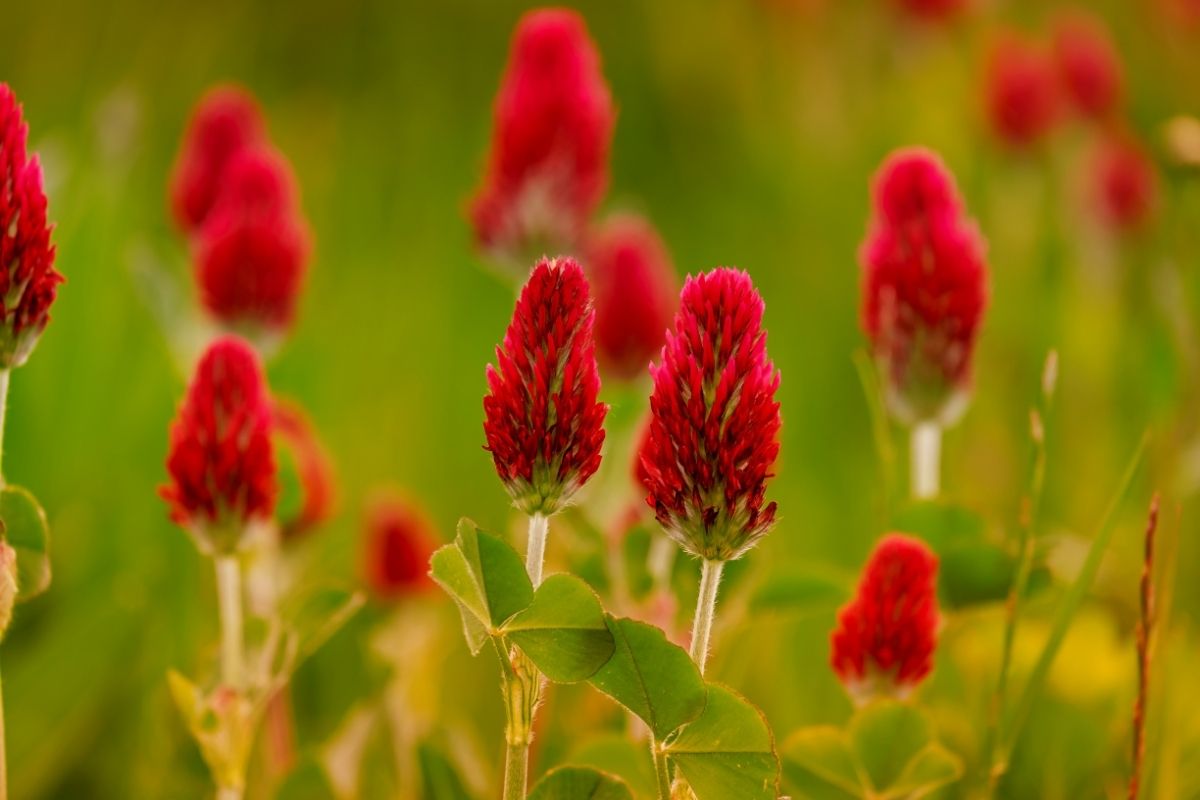
The Rose Clover is a self-seeding plant that thrives best during the colder months of fall to spring. It is very adaptive to the kind of soil it is placed in, however, it enjoys light-textured soil. Small purple to pink blooms are produced on erect green stems.
22. Knotted Clover (Trifolium Striatum)
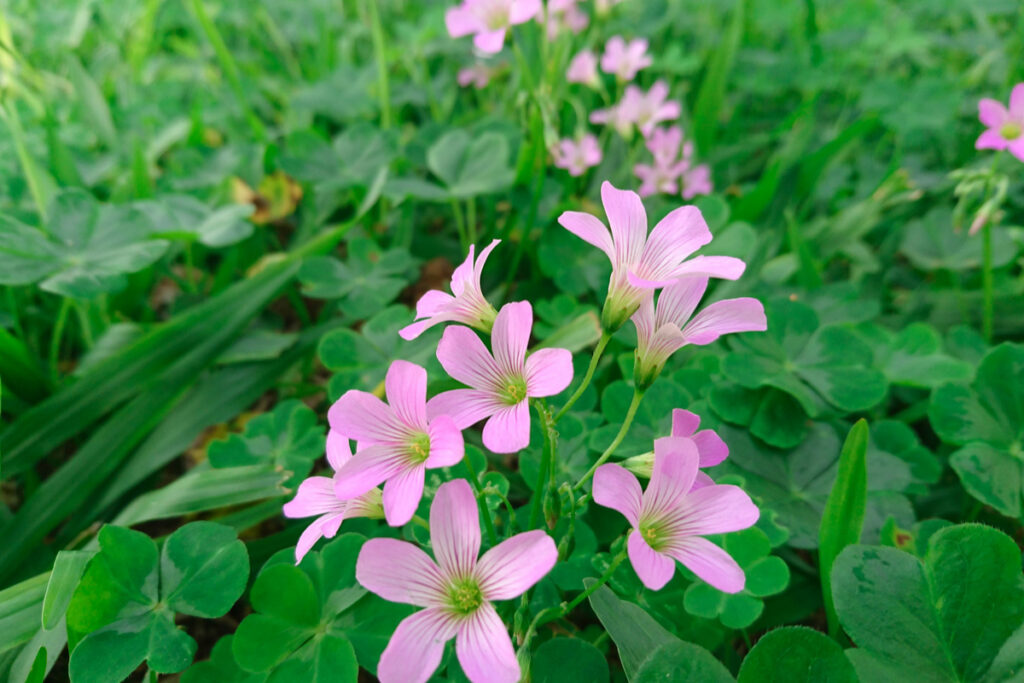
The Knotted clover is also known as the soft clover. On hairy stems, very small pale pink flowers are produced during early summer. This type of clover likes well-drained and moist soil.
23. Clustered Clover (Trifolium Glomeratum)
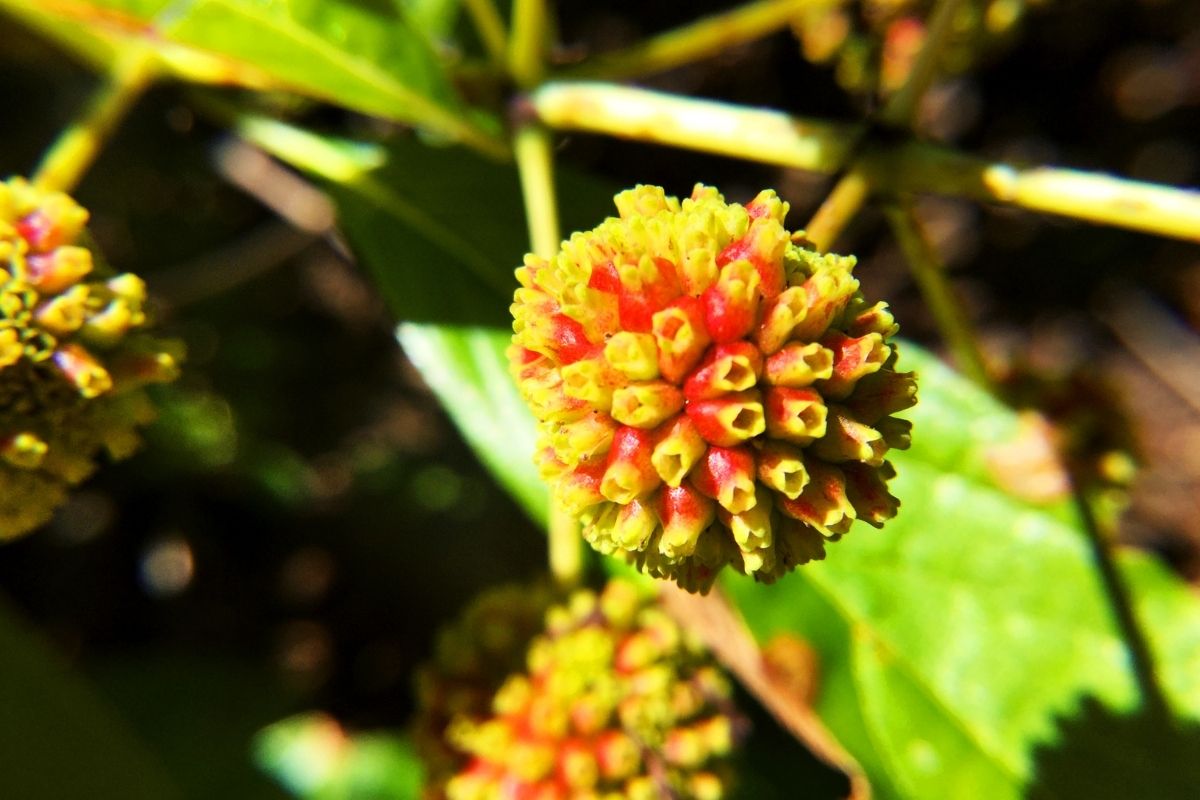
The Clustered Clover gets its name due to the flowers being known to cluster together. These flowers will produce white to pale pink flowers, which are typically supported on a straight stem. This plant can grow up to 2 feet in height.
24. Showy Indian Clover (Trifolium Amoenum)

Another engaged plant, the Showy Indian Clover which can be found in the grasslands in San Francisco. This is considered to be a wildflower that produces spherical flowers with purple petals that have a white tip.
25. Longstalk Clover (Trifolium Longipes)
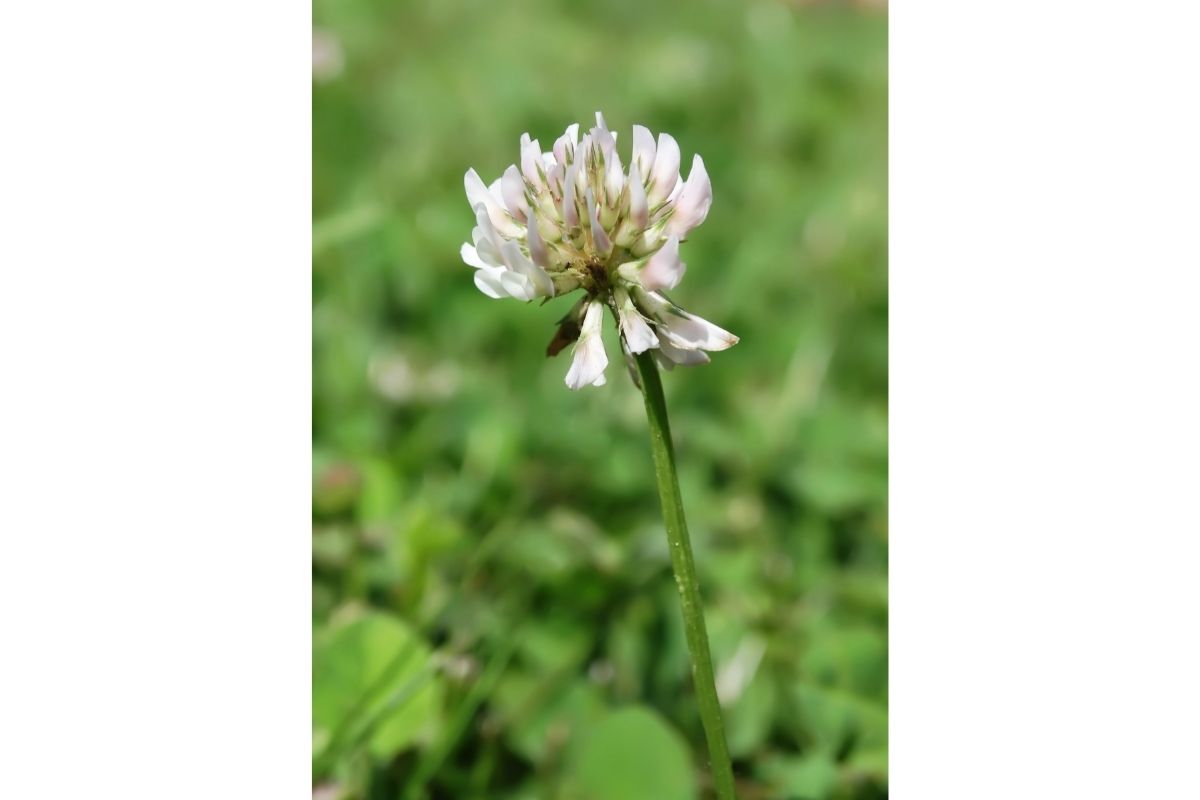
The Longstalk Clover produces purple to white daisy-like blooms. It is a plant that is native to North America and known for attracting bees and butterflies.
26. Bull Clover (Trifolium Fucatum)

The Bull Clover is actually edible, which will grow back every year. It has become more popular to grow this plant in pots, as it only grows around 1 foot in height.
White, pink, and purple hues are seen on the petals of the flower heads that will bloom from spring through to summer.
27. Pinpoint Clover (Trifolium Gracilentum)

The Pinpoint Clover has quite attractive yet unique flowers. They are pink in color with dark purple markings.
These will bloom during spring all the way through to summer. They enjoy lots of sunlight, in sandy or gravel-like soils. Butterflies and bees love this plant and are very attracted to it for its nectar.
28. Cup Or Bowl Clover (Trifolium Cyathiferum)
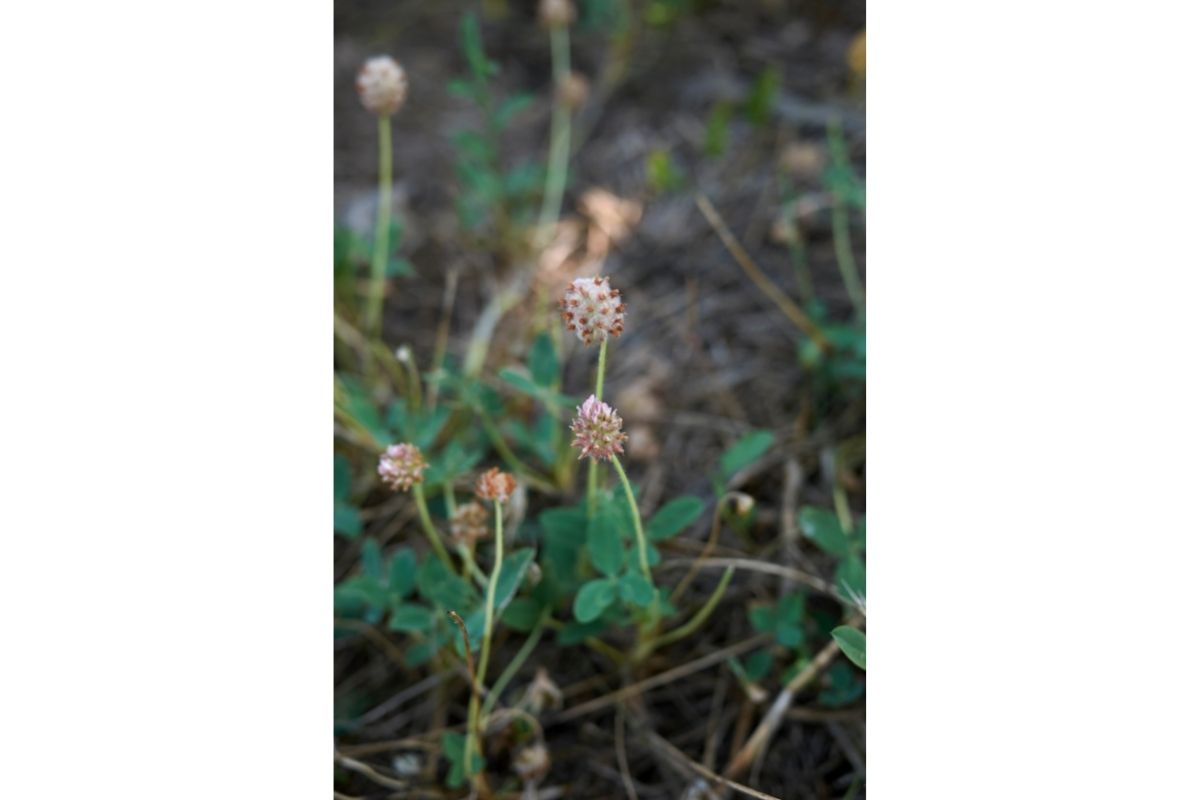
The Cup Clover is generally found in North America. This clover plant will develop yellow blooms that have a pink tip.
They form a cup shape and like to cluster together. This clover is often dried to be used for medical purposes or in tea.
29. Cowbag Clover (Trifolium Depauperatum)

The name of this clover may be odd, yet this plant is commonly found in coastal areas or in rainforests.
It is a small clover that produces burgundy blooms that creates a balloon-like shape. This shape occurs as the fruit of this plant begins to form.
30. Rancheria Clover (Trifolium Albopurpureum)
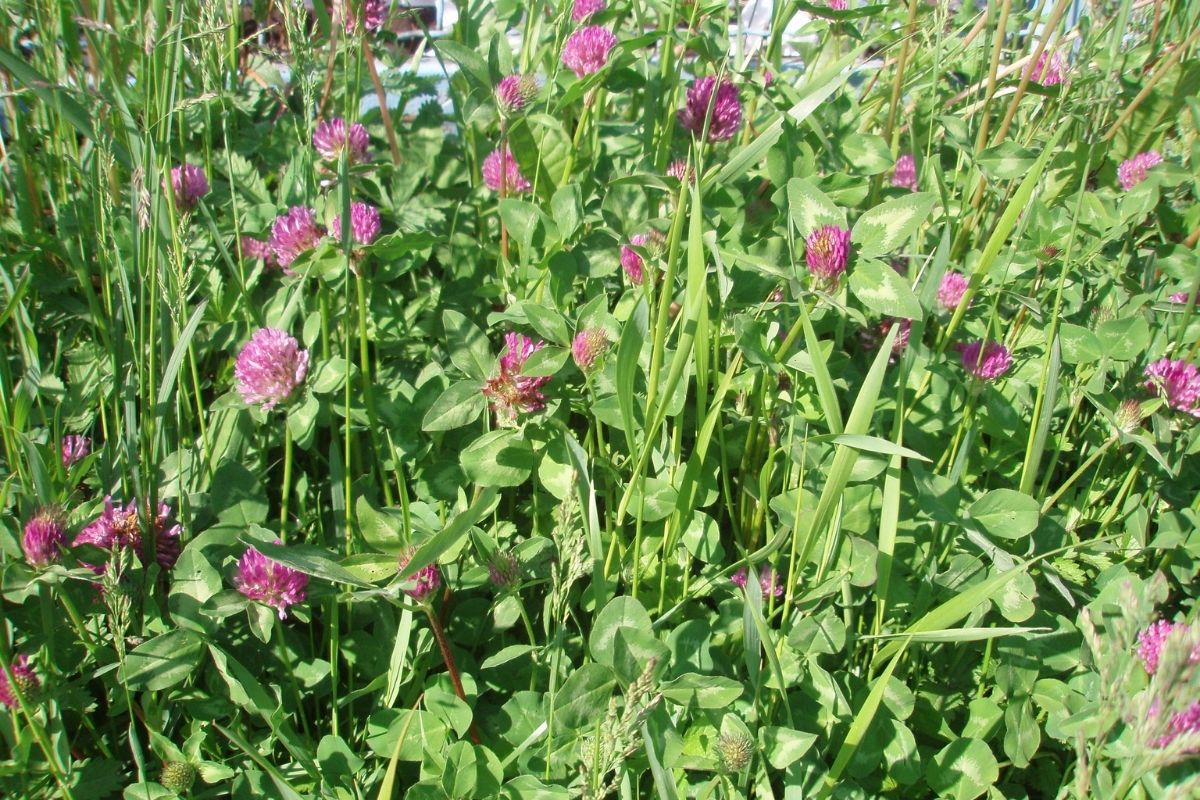
The Rancheria Clover is perfect to be used as a pot plant. It produces large purple and white blooms that will flower during spring. Native to California, that will self-seed and come back every year.
31. Small Head Clover (Trifolium Microcephalum)
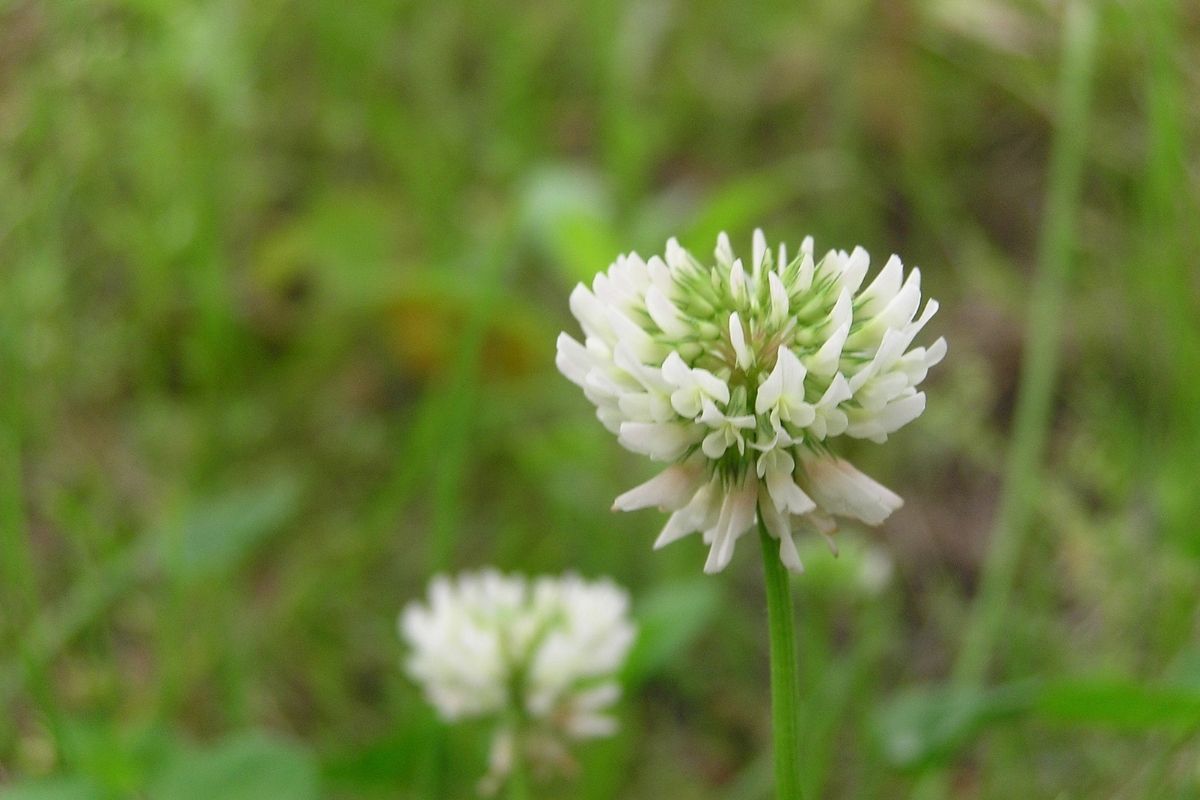
The Small Head clover is a very small plant that when stood upright is only around 10 to 70 cm in height.
This plant will produce hairy pink and green flowers in a globe-like shape. Often found in meadows or by sandy riverbanks.
Final Thoughts
As you can see, there is a wide selection of clovers for you to find and even try to grow yourself. Each clover plant is beautiful and can add some color to your garden. Typically seen as ground cover.
We can bet you didn’t realize there were so many varieties of clover plants out there. However, now you know a select few of them, which you can try to grow in your own gardens.
Editor’s Recommendations
A Complete Guide To Top Dressing A Lawn: Benefits & How To Do It Correctly!
How and When To Use Ironite In A Lawn For Best Results?
How Much Does Sod Weigh? Transporting & Taking Care Of Your Sod







